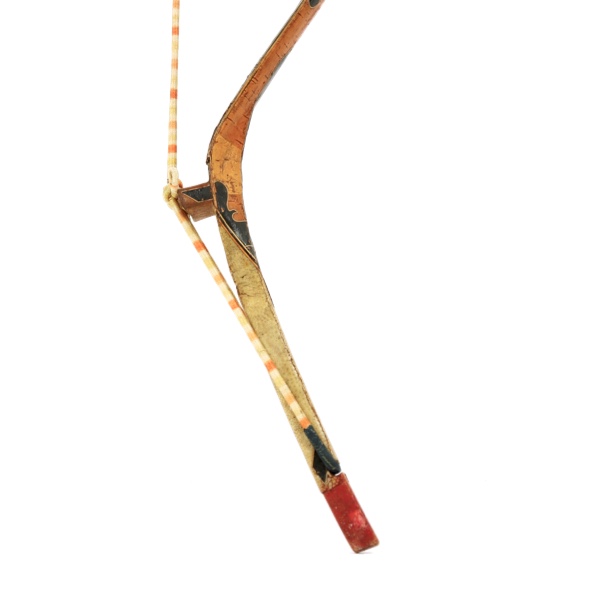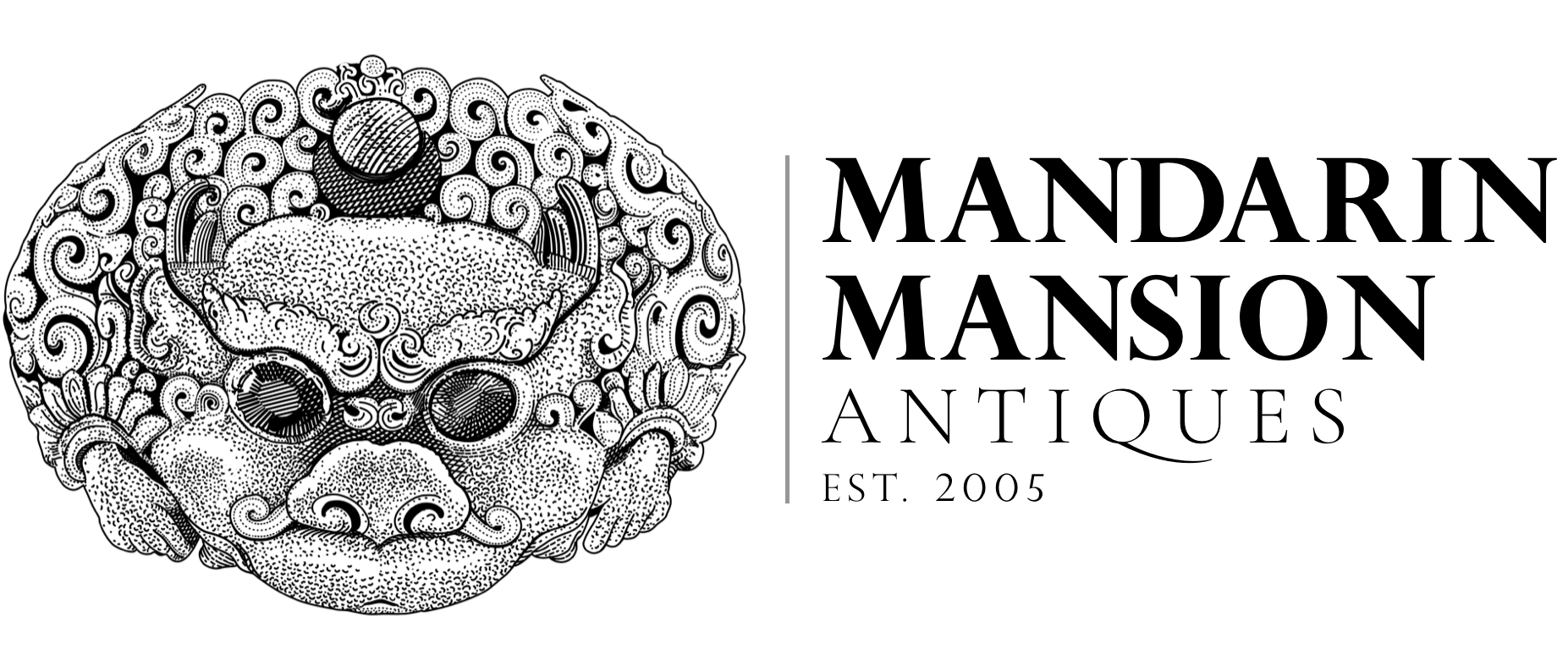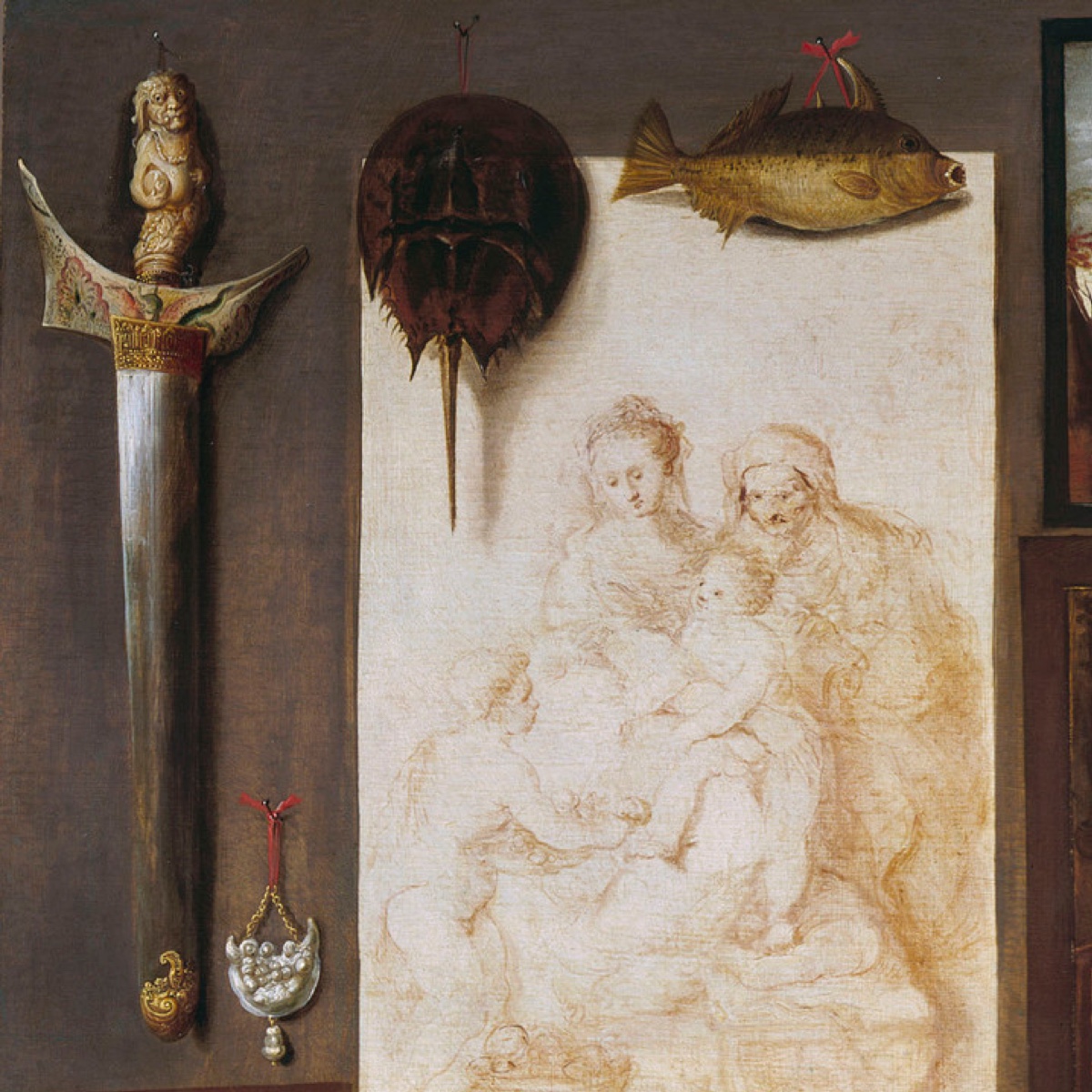
Asian arms in Dutch master paintings
Dutch masters' fascination with exotic Asian wares shown in a series of paintings.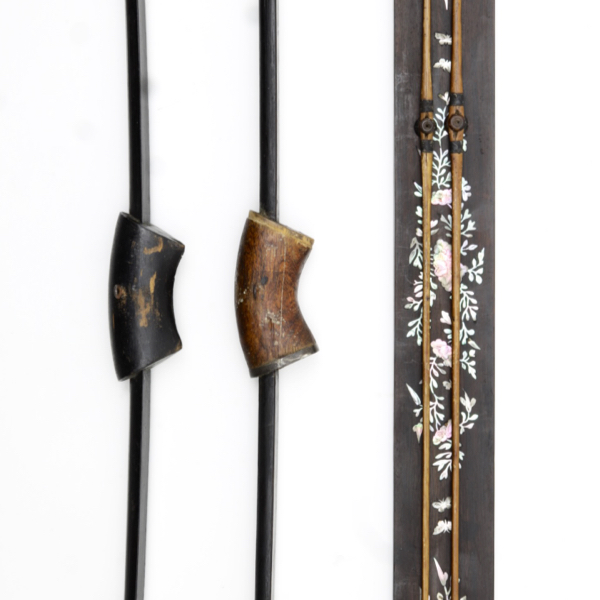
Rare Vietnamese pellet bow set
An exceedingly rare set with fine mother of pearl inlaid string board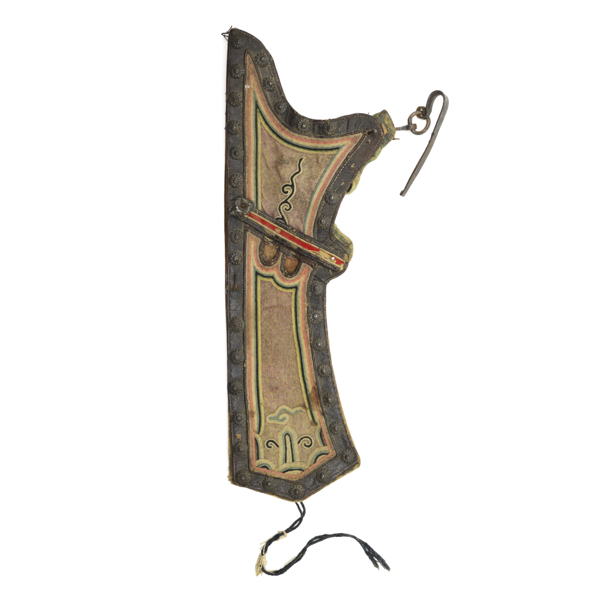
Broken Tibetan quiver
A once fine example that had a bit of a rough life.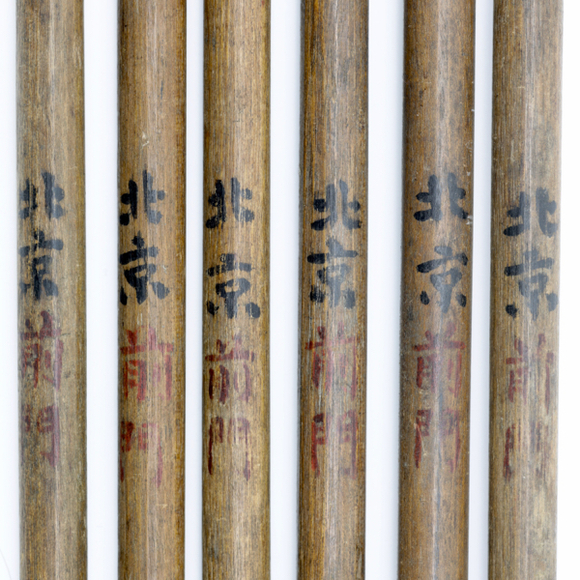
Qianmen war arrows
I am a bit of an arrow fetishist.
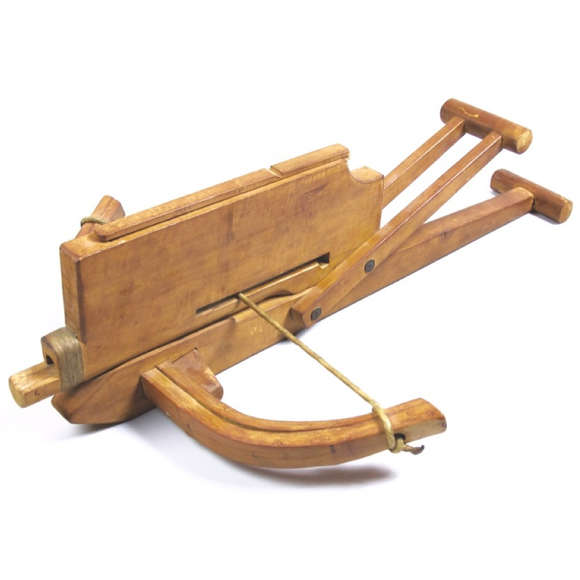
Zhūgénǔ (诸葛弩) or "cho-ku-nu"
Chinese word for a repeating crossbow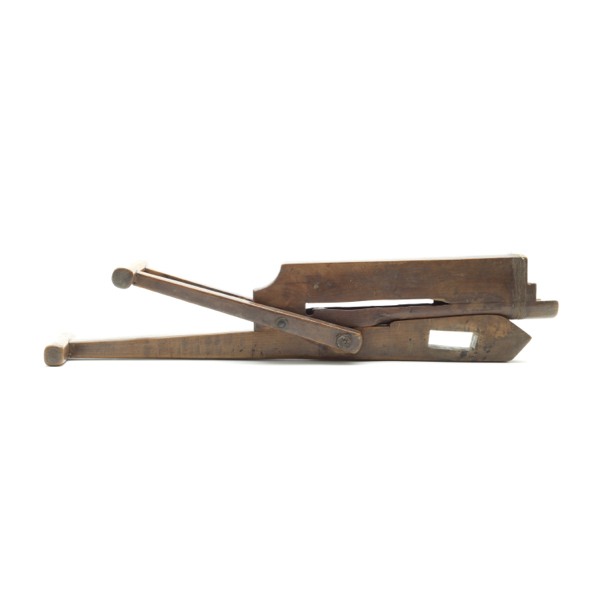
Repeating pellet crossbow stock
A very rare variety of the Chinese repeating crossbow that shoots large pellets.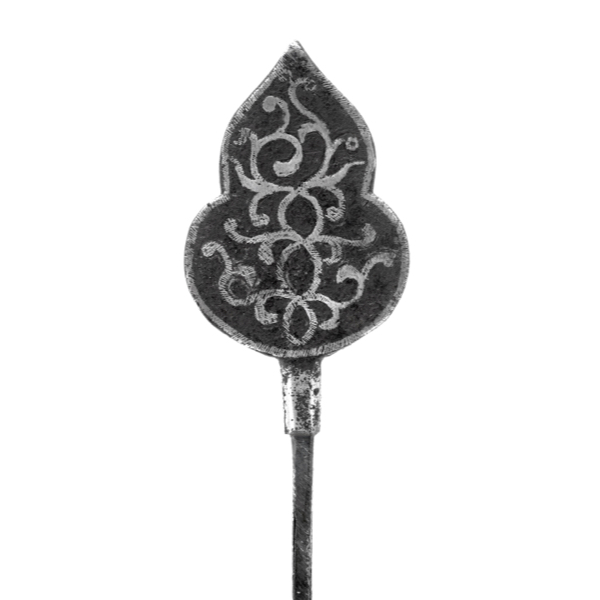
Ceremonial arrowhead
Made of iron, shaped as a gourd, with silver overlay.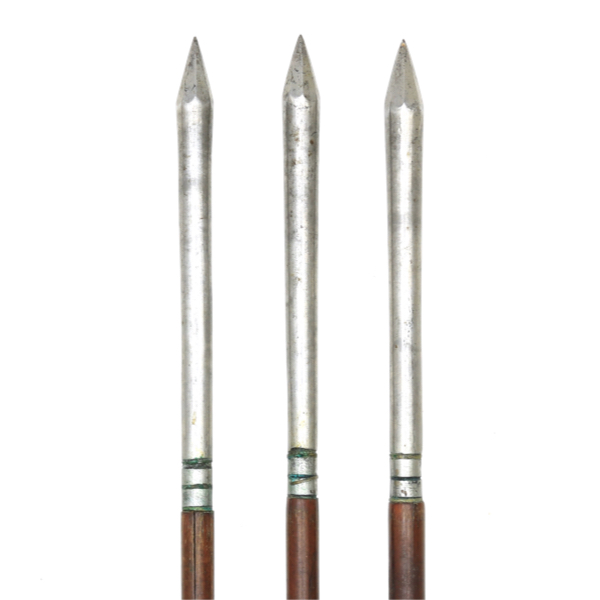
Tarah-i-khāra (तरह इ खर)
Hindu name for a heavy type of heavy bodkin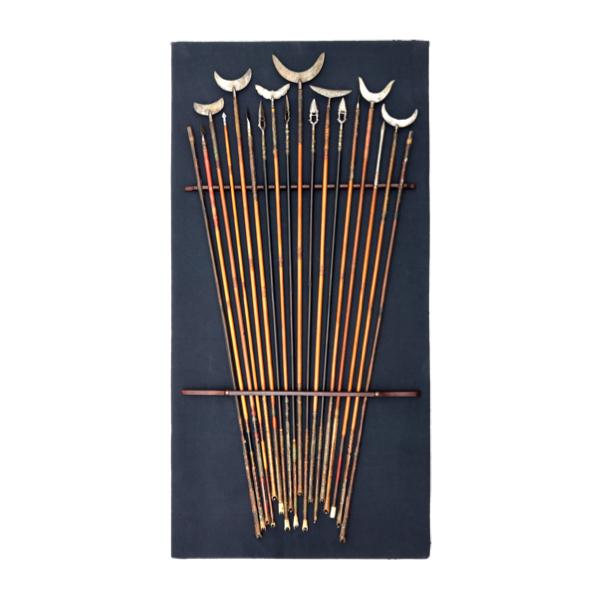
Group of mounted Indian arrows
Featuring various extremely rare arrows with crescent heads.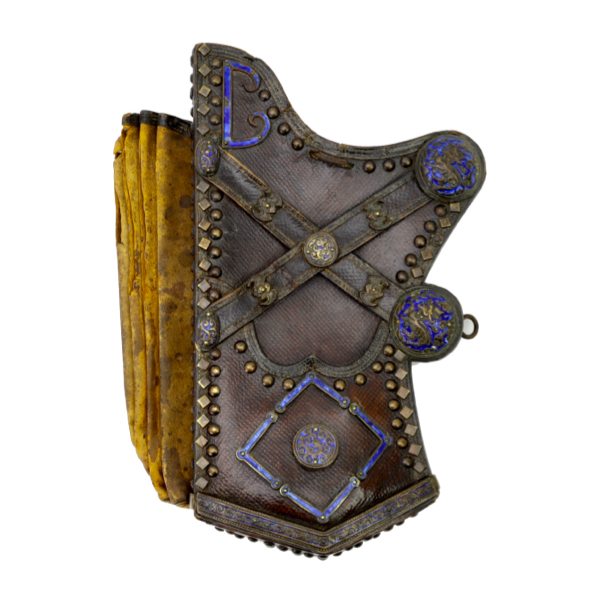
Rare imperial xièzhì decorated quiver
Xièzhì are mythical animals and were the emblem of the Qing censorate.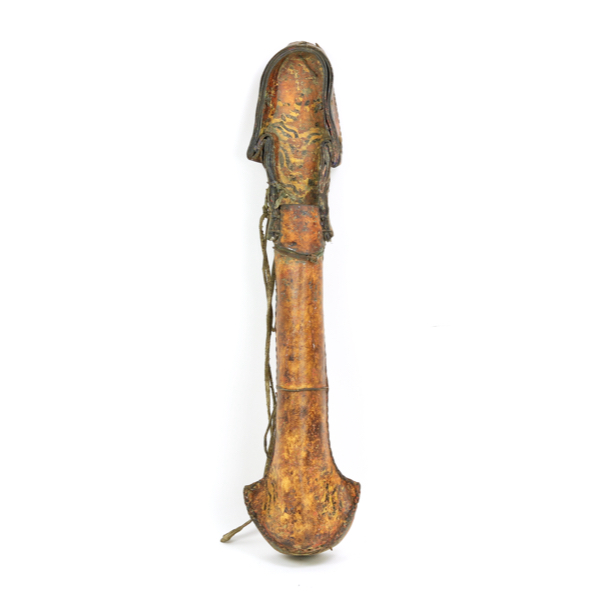
Mongol conquest period quiver
Carbon dated to 1175-1275 A.D. with 95,4% certainty, the height of the Mongol conquest period.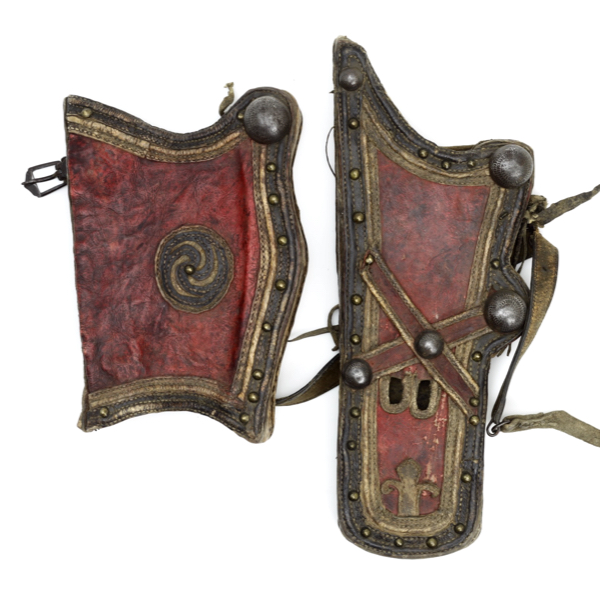
Tibetan bowcase and quiver
Of the 19th century. Ex Stephen Selby collection.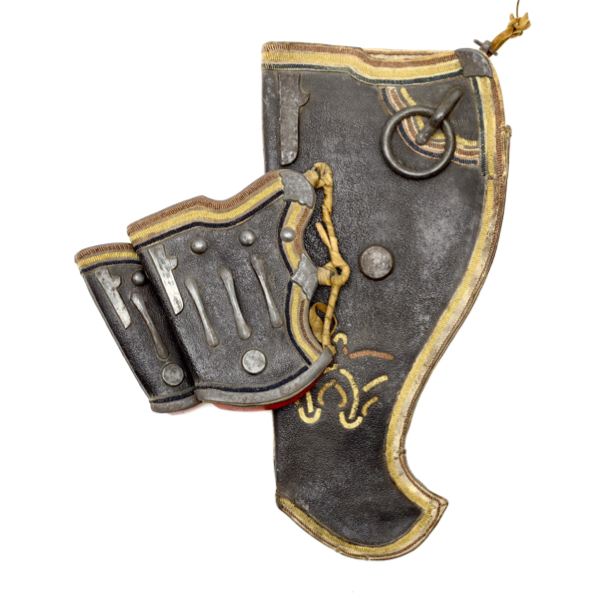
Korean bowcase & quiver
A very rare matching set of Korean bowcase and quiver.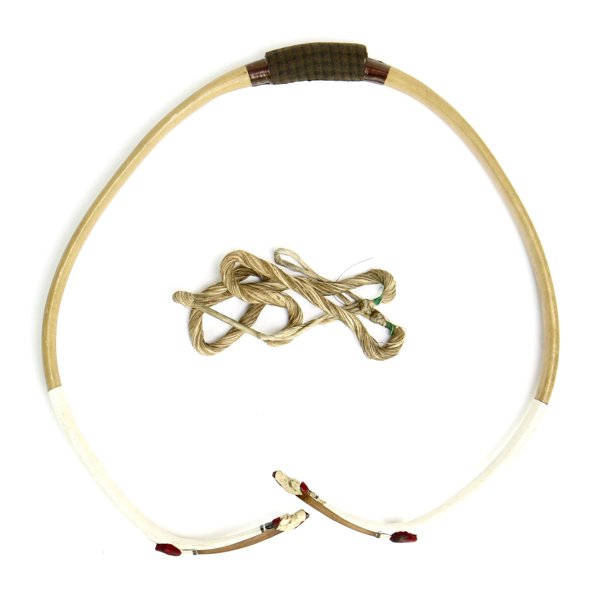
Korean horn bow set
An old Korean hornbow from the 50s or 60s with string and arrows.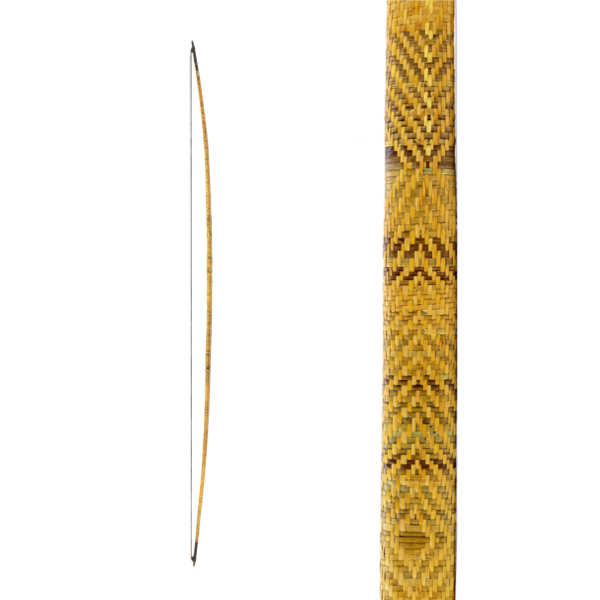
A Solomon islands plaited bow
Made of palm wood, entirely decorated with plaited work.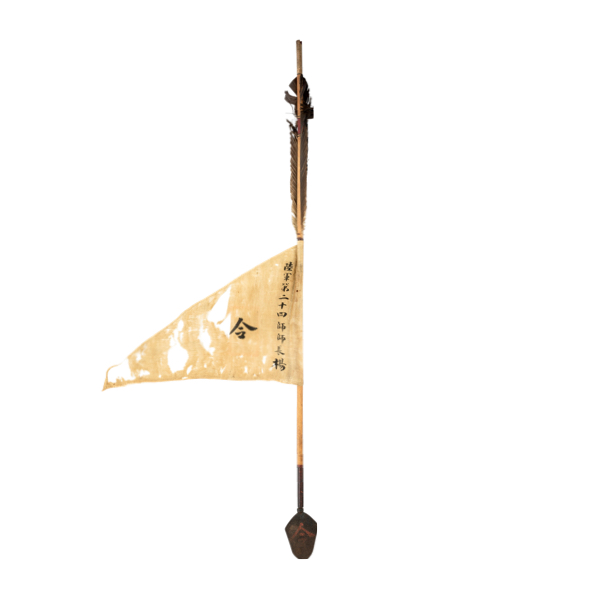
Lìngjiàn (令箭) or "Command Arrow"
A special arrow used to prove one's authority.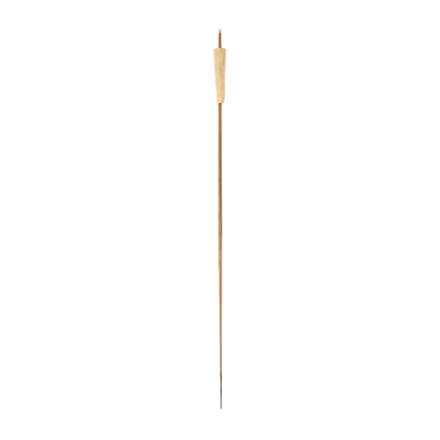
Tepus
A variety of Dayak blowgun dart.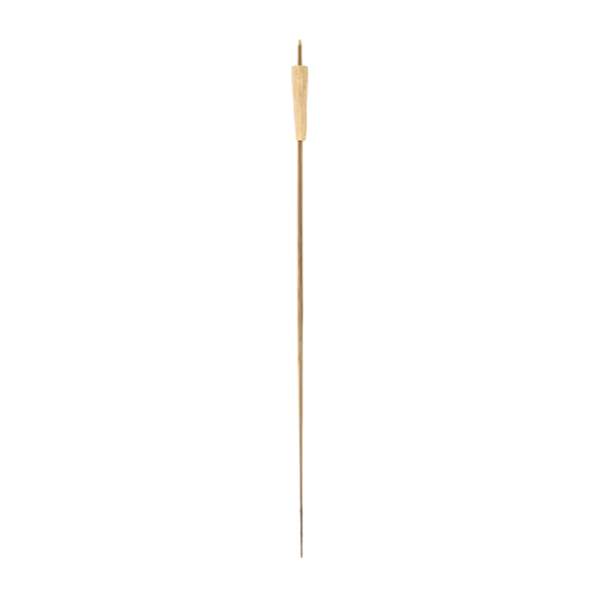
Damek
Dayak name for a blowgun dart
Dayak dart quiver with darts
Complete with a large number of darts, some with poisoned tips.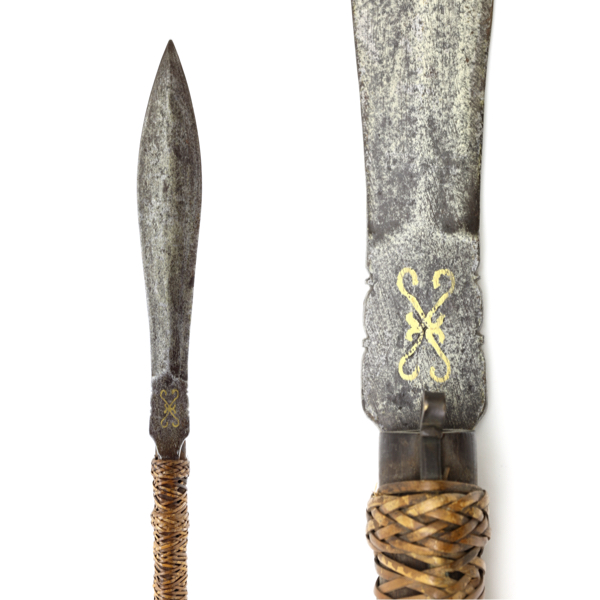
Sumpitan
Malay name for the Dayak blowgun.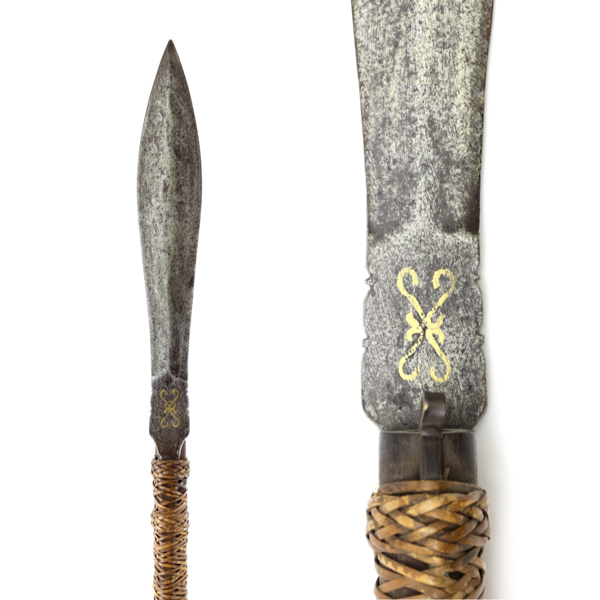
Fine Dayak blowgun
Long piece, original length, with aso motif inlaid in blade.
Tibetan bowcase & quiver
A matched set of lacquered leather, finely decorated with gradient colors and black and gold detailing.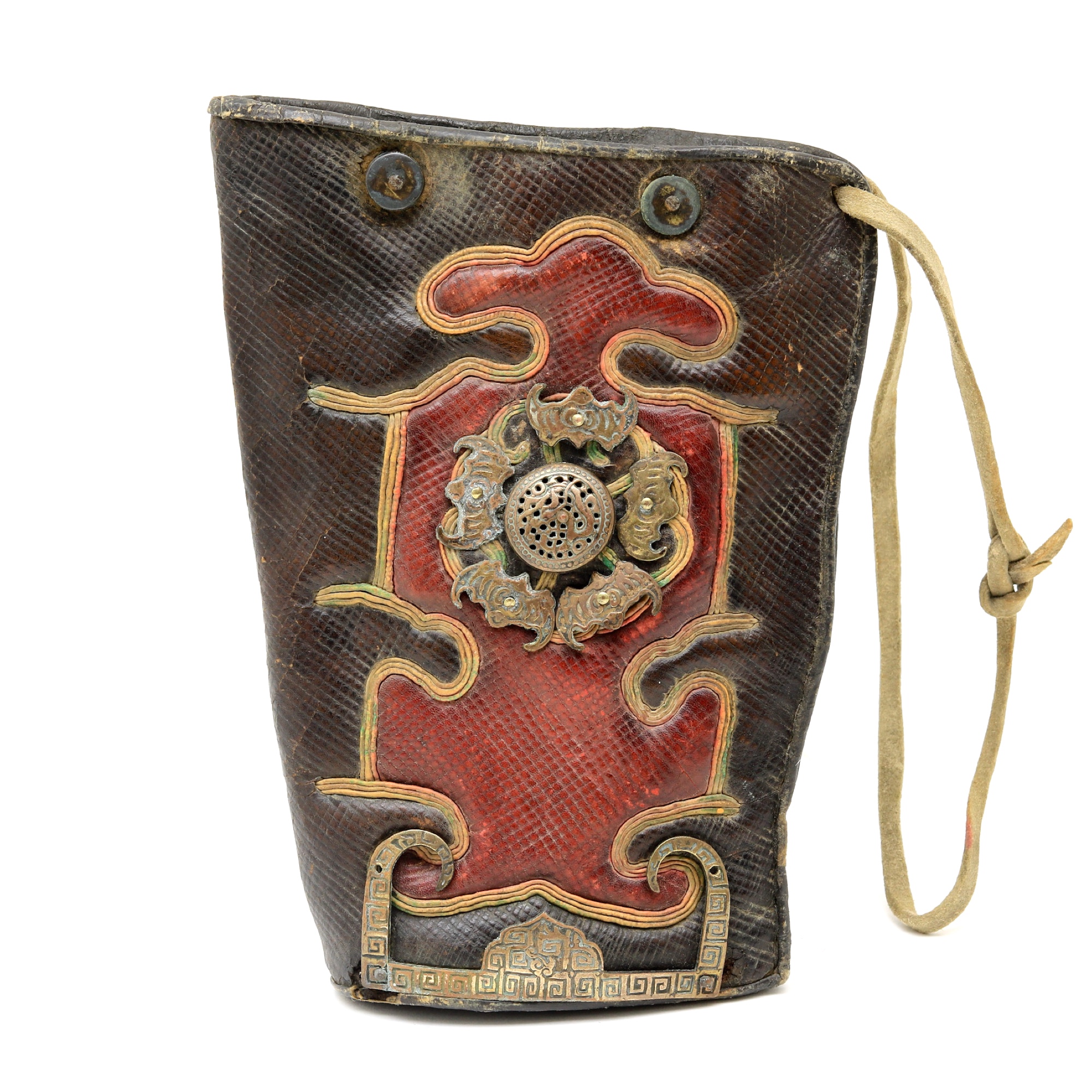
Mongolian target quiver
Combining surplus Qing mounts with Mongol leatherwork.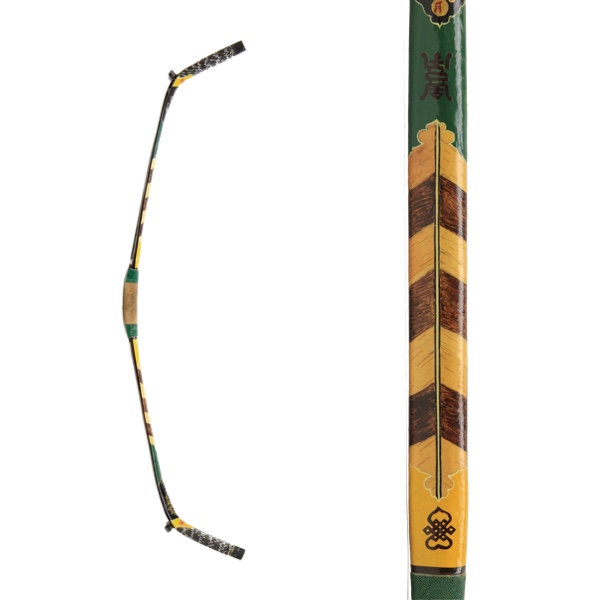
Bow by Yang Wentong
One of the last bows by Yang Wentong, father of Yang Fuxi.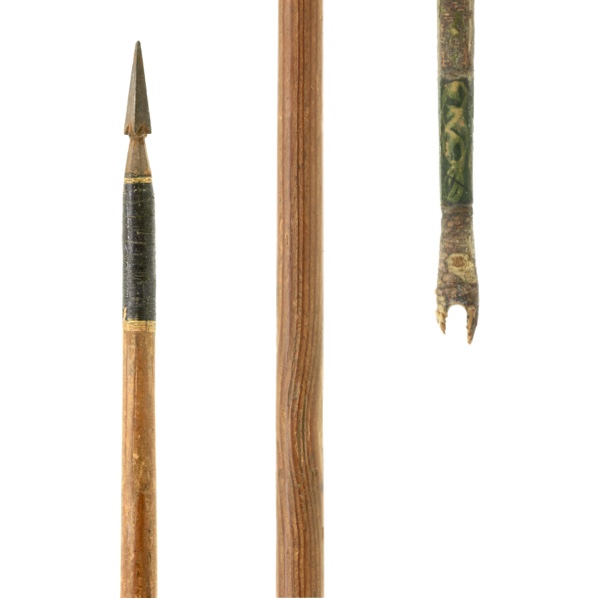
Rare Ottoman war arrow
With a small, barbed armor-piercing point and early style painted shaft.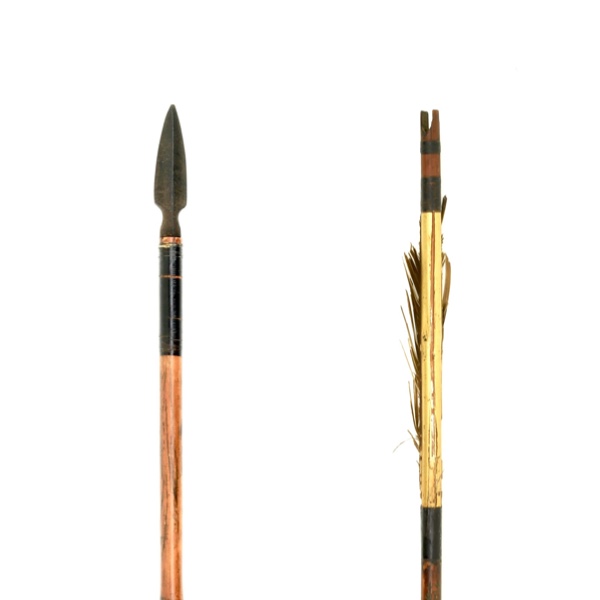
Rare Korean war arrow
With a large double-edged tip and golden cresting.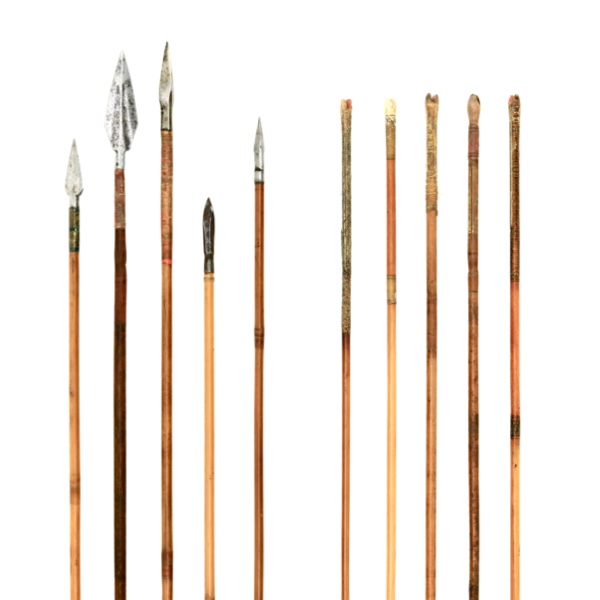
Various Indian arrows
An assortment of Indian arrows with various heads.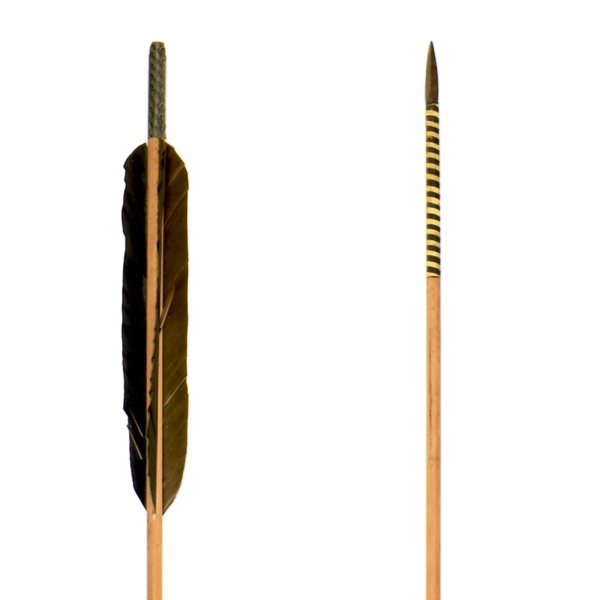
Chinese target arrow
With snake skin nock. Probably made by Ju Yuan Hao in the 1950s.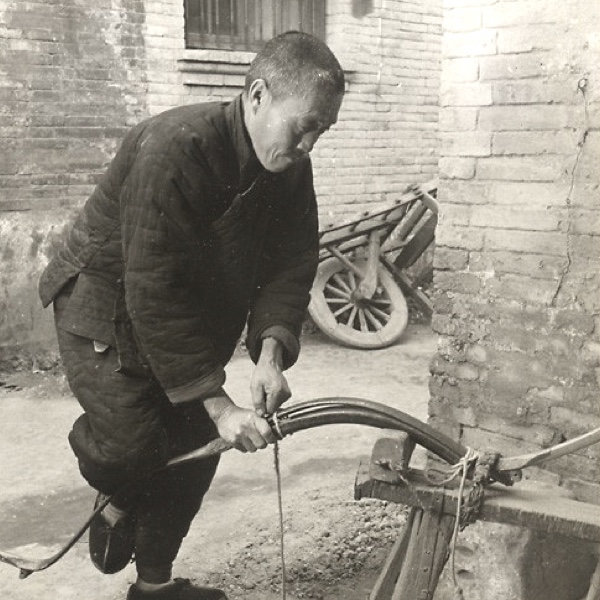
Gōng jiàng yíng (弓匠營)
The bow and arrow maker's quarters in Beijing.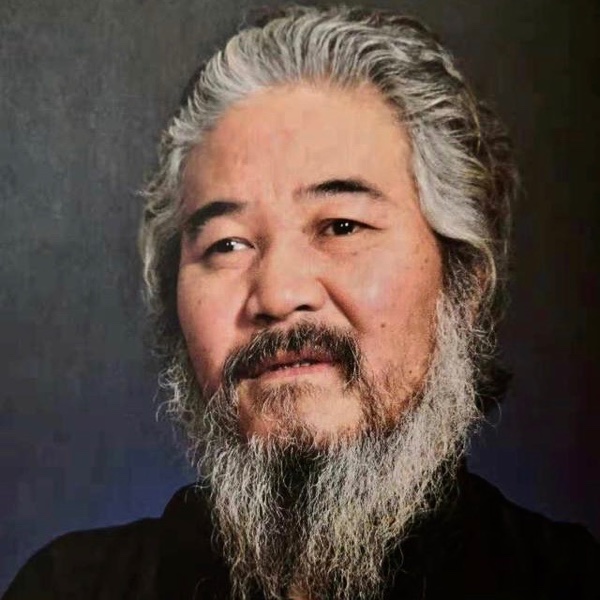
Yáng Fúxǐ (杨福喜)
Manchu bow maker of the Jù Yuán Hào (聚元號) shop, Beijing. Active 1998-present.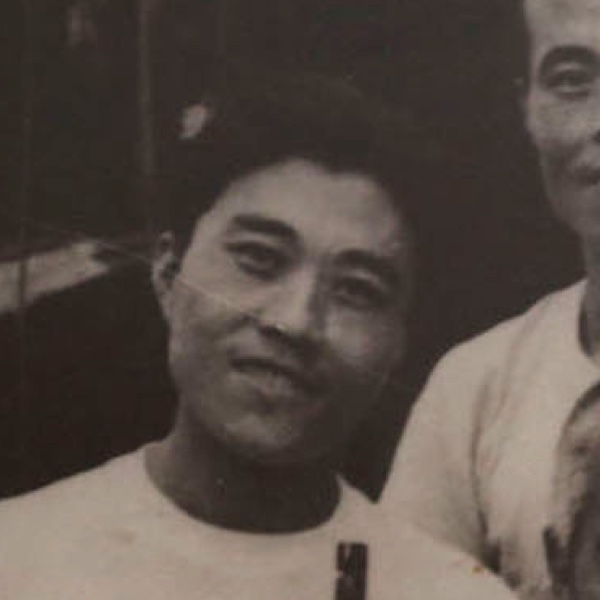
Yáng Wéntōng (杨文通)
A 20th-century Manchu bow maker of the Jù Yuán Hào (聚元號) shop, Beijing.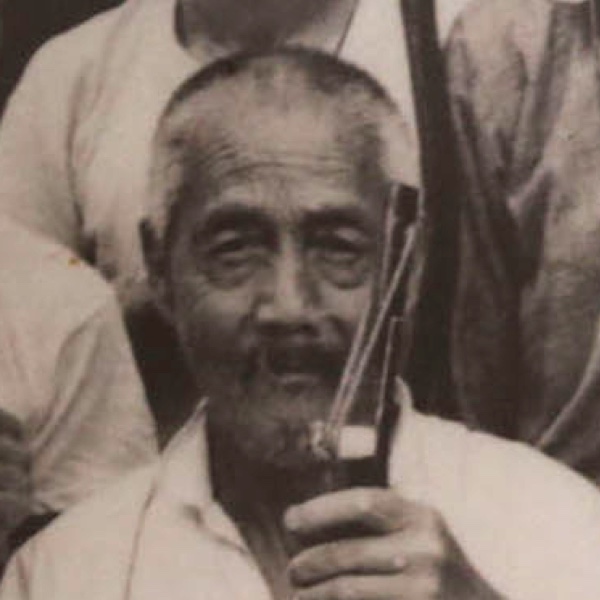
Yáng Ruìlín (杨瑞林)
A Manchu bow maker. Owned Jù Yuán Hào (聚元號).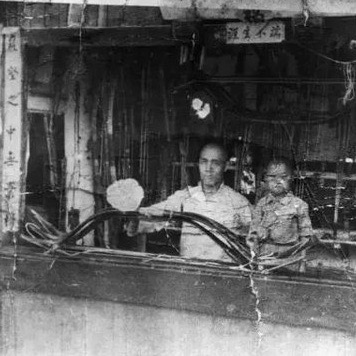
Jù Yuán Hào (聚元號)
A famous bow making shop in Beijing, still active.
Bow by Ju Yuan Hao of Beijing
Made by the last operational bowyer of China, probably for the Mongolian market.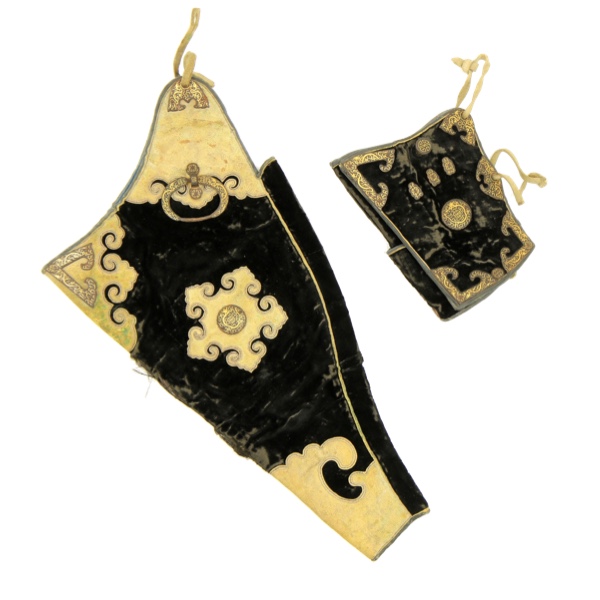
Iron mounted Qing bowcase & quiver
With iron mounts with golden overlay of dragons.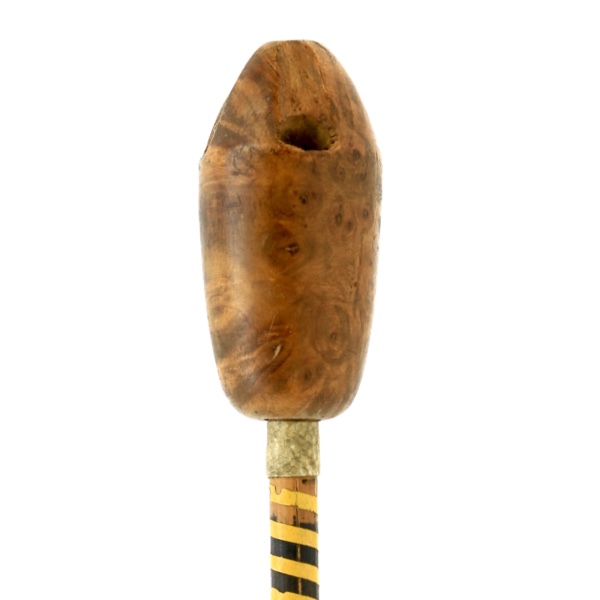
Bàojiàn (骲箭)
Chinese name for a class of arrows with a large, non-ferrous head. Many are whistles, some are blunts.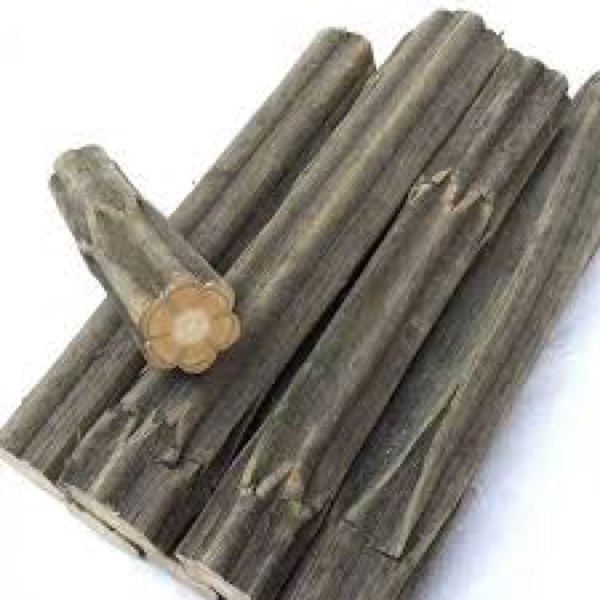
Liùdàomù (六道木)
Chinese name for a strong and heavy wood used for staffs and arrow shafts.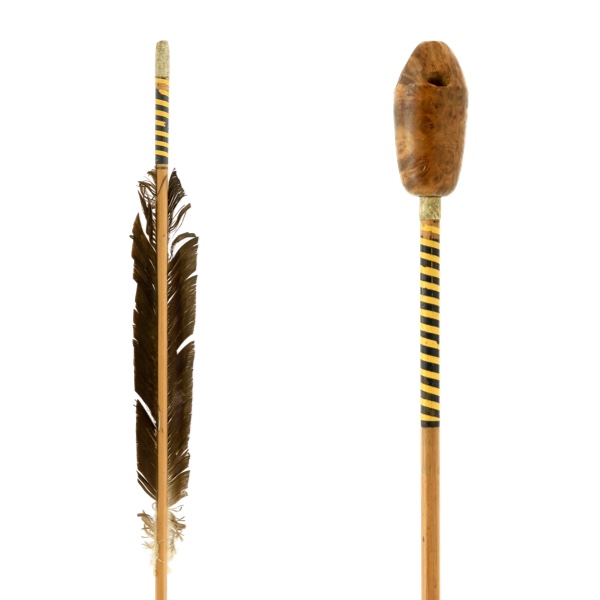
Republican period whistle arrow
Dating from the revival period of Chinese archery in the 1930s.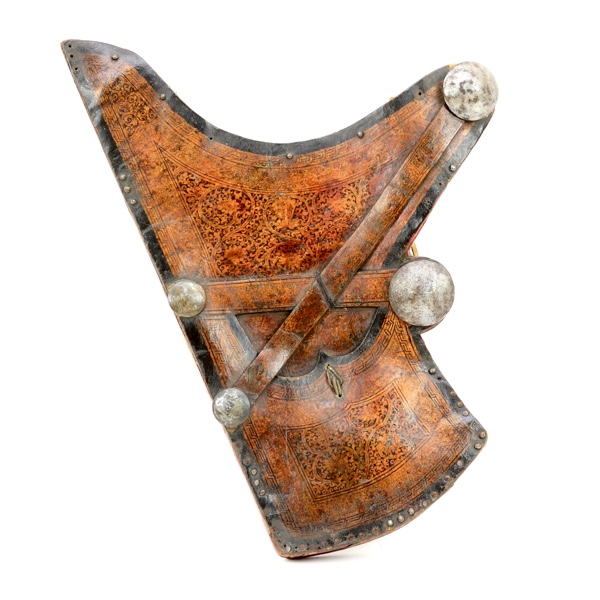
Early lacquered quiver
It's face covered with beautifully lacquered leather, in that characteristic earlier style.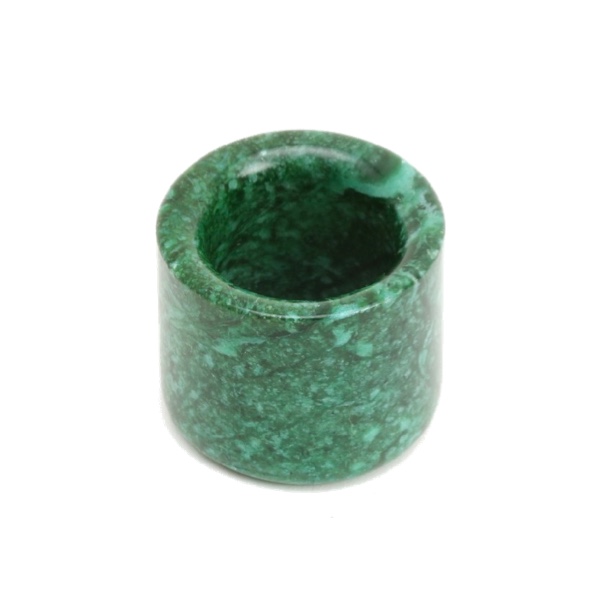
Malachite Manchu archer's ring
Such rings were worn by Qing dynasty "bannermen" as a sign of their status as a conquest elite.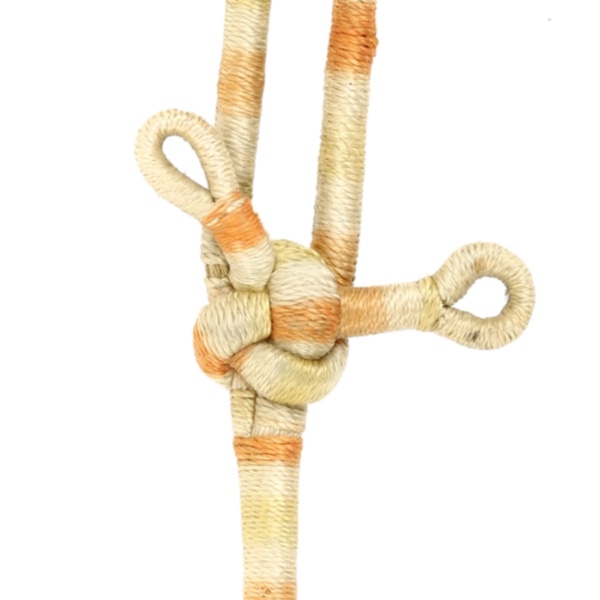
Xián gé dā (弦挌搭)
Chinese term for the knot in a bowstring.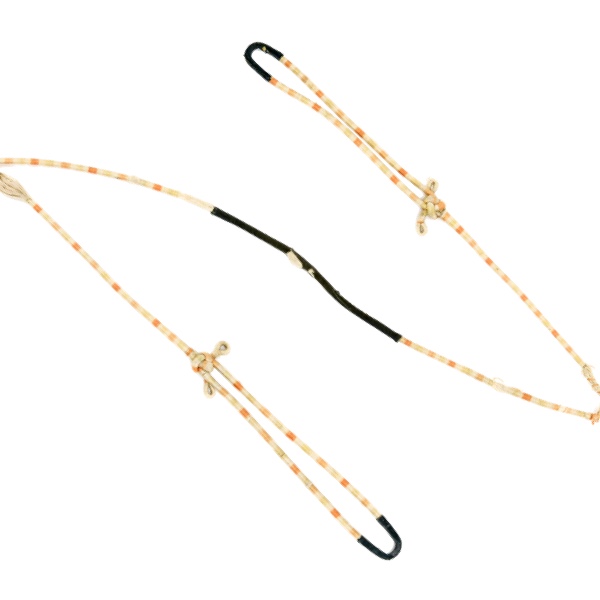
Gōng xián (弓弦)
Chinese term for the bowstring.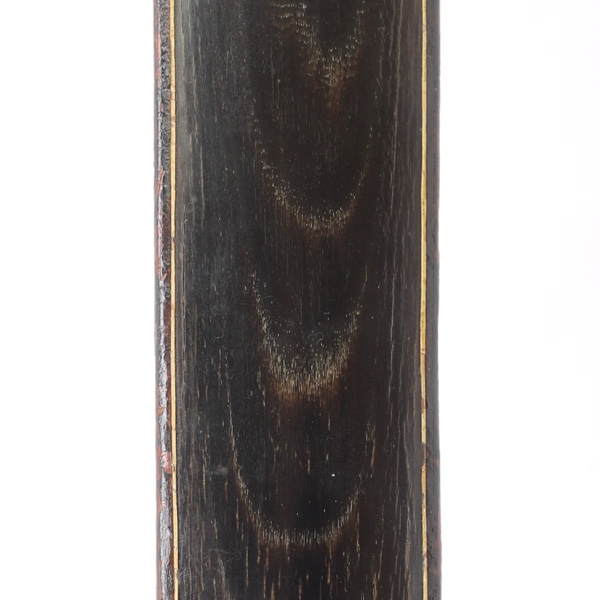
Gōng miàn (弓面)
Chinese term for the face of a bow, usually made of buffalo horn.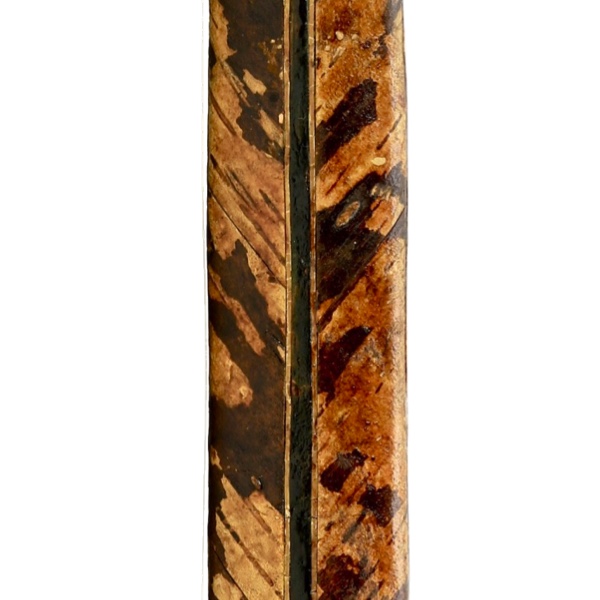
Huà huà pí (畫樺皮)
Chinese term for the "painted birch bark" often covering composite bows.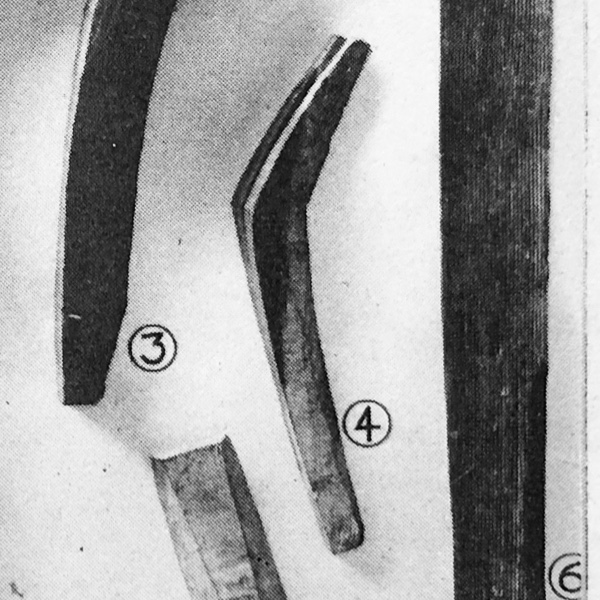
Gōng nǎo (弓腦)
Chinese term for the "knee" of a composite bow.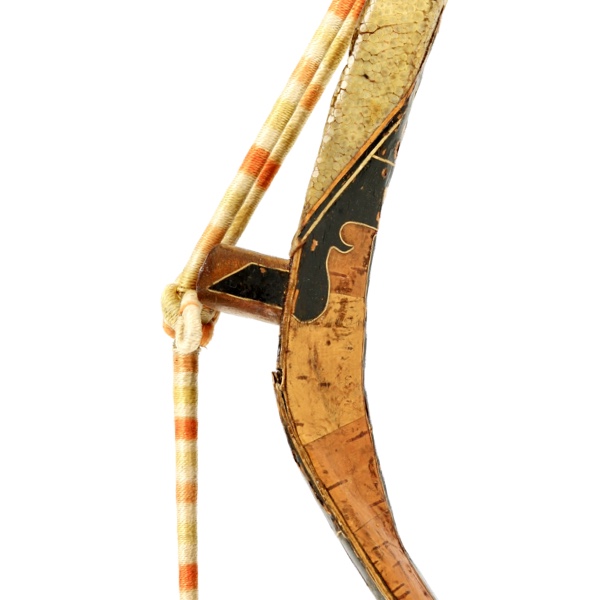
Gōng diànzi (弓墊子)
Chinese term for the string bridge on some types of composite bows.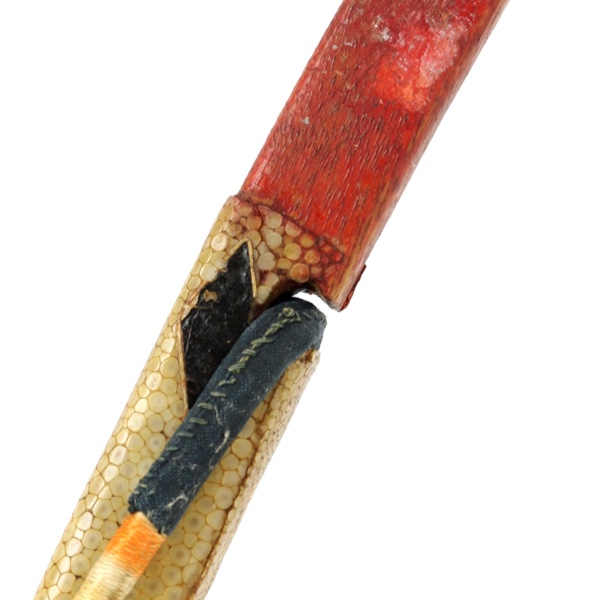
Kòuzi (扣子)
Chinese term for the string notch on each bow tip.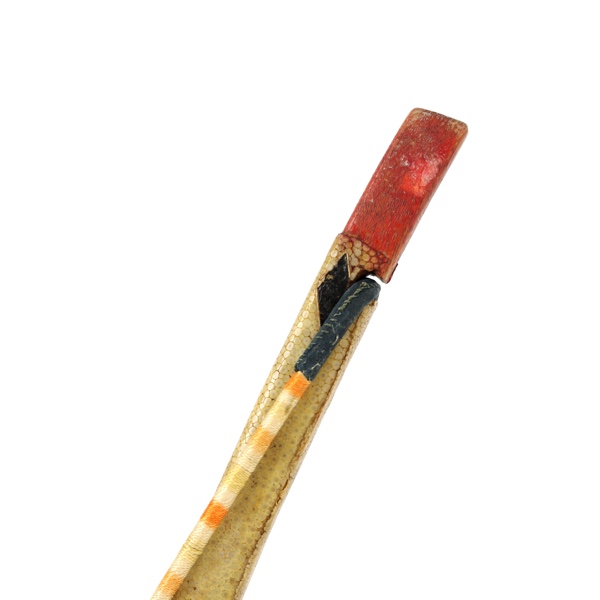
Shāo tóu (弰頭)
Chinese term for the tips on either end of a bow.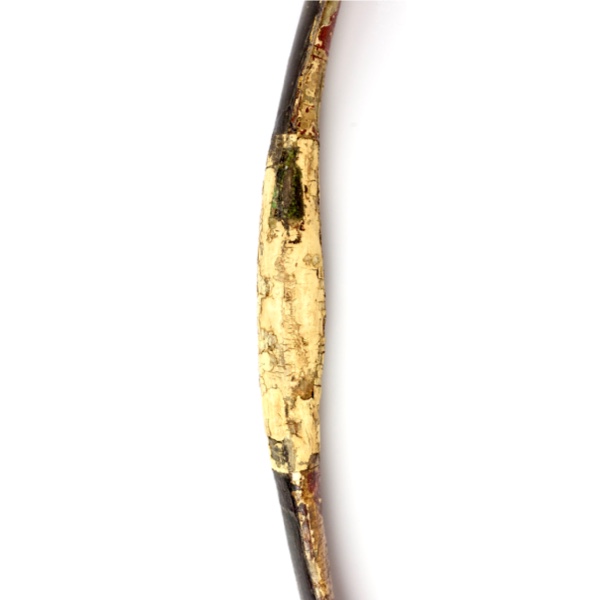
Jiàn liūzi (箭溜子)
Chinese term for the spot on the bow where the arrow slips by.